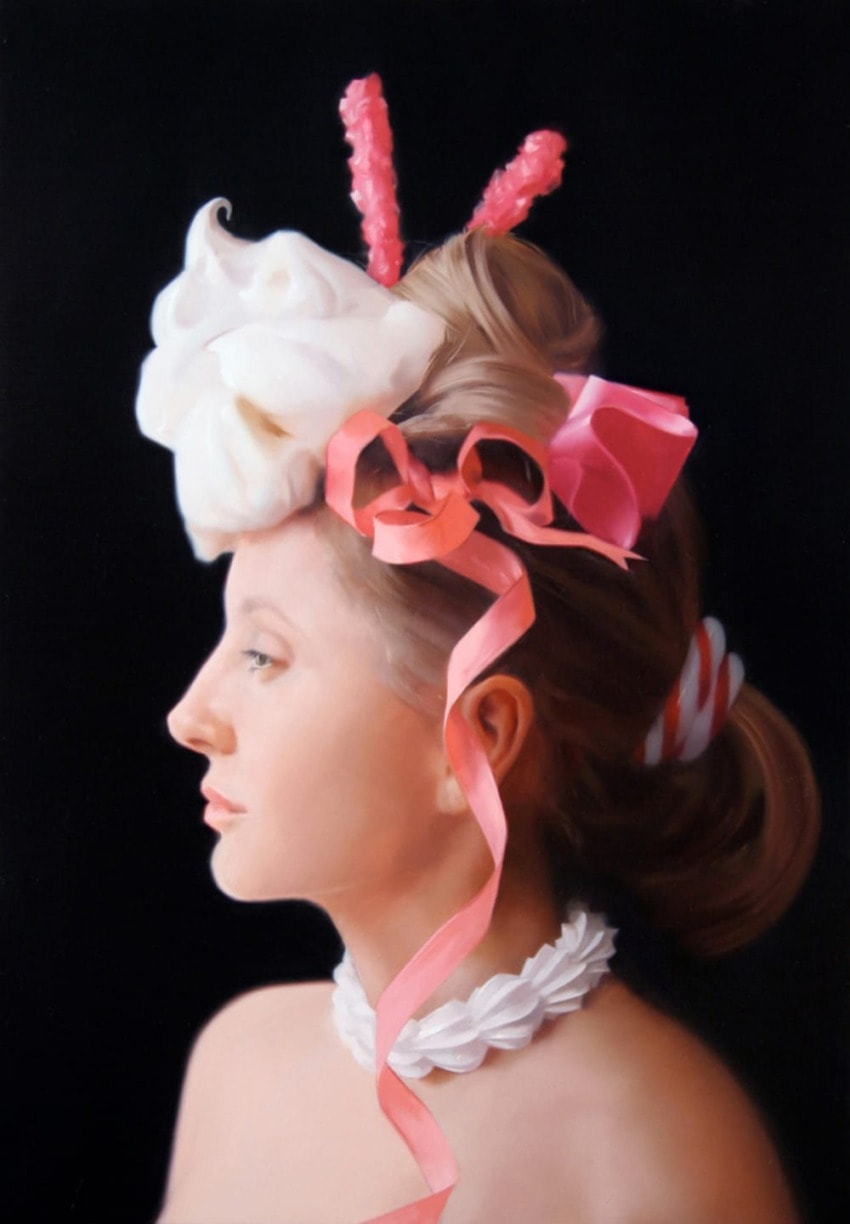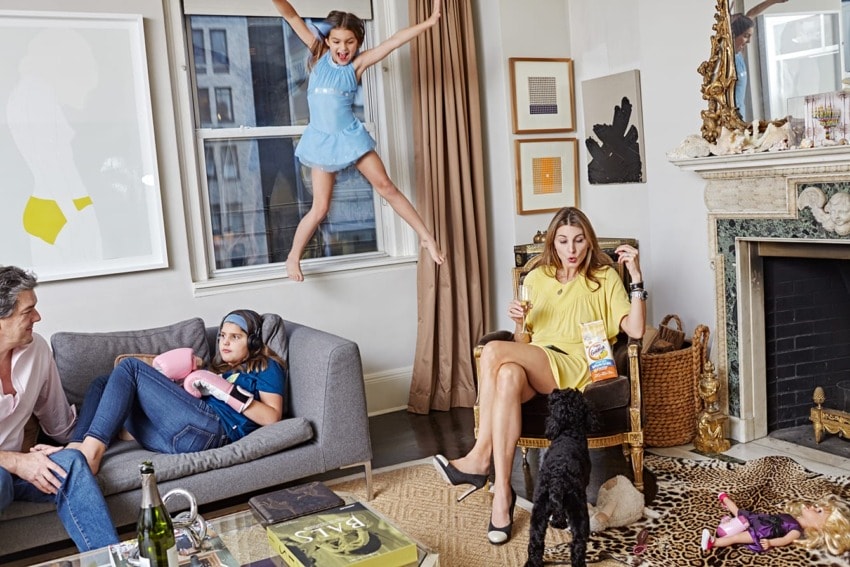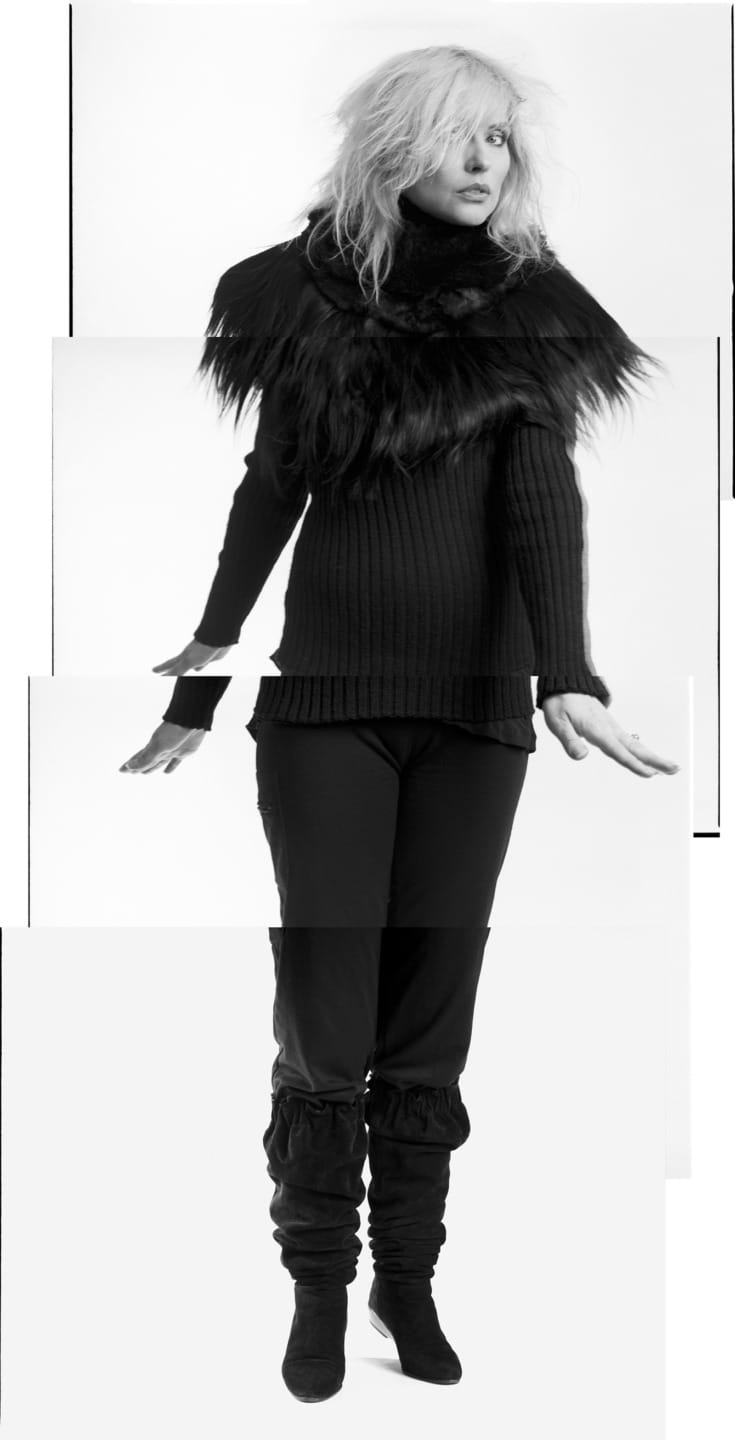Portraiture in the Modern Age
A new generation of artists pushes commissioned portraits beyond the expected

For centuries, the commissioned portrait stood as a measure of wealth, status, and taste. Today, amid a visual cacophony of selfies, the artist-rendered portrait has again become a coveted imprimatur among the financial and cultural elite. But whether in Piero della Francesca’s diplomatic decision to paint the one-eyed Duke of Urbino in profile or Gustav Klimt’s habit of sleeping with his subjects, the relationship between artist and patron has always been fraught. How much creative control must an artist relinquish in exchange for patronage?

For some, like painter Will Cotton, the answer is a stark “none.” Cotton had begun referencing art history’s parade of royals in his whimsical portraits of friends—adorned with sugary confections instead of furs and jewels—when he started receiving requests for commissions more than a decade ago. Initially he hesitated but then was asked to paint Marie-Chantal of Greece. “A real princess?” he recalls thinking. “Absolutely!”
Cotton reimagined her with a large dollop of meringue in place of a tiara, along with candy hair ornaments and a frosting choker. He was surprised the experience “was not the horror show I expected” and now undertakes a maximum of two commissions a year, with one non-negotiable caveat: “There can be no dictation,” he says. “They are offering themselves up as models.”
Many artists have similarly strict rules. Gail Albert Halaban requires that commissions fit one of her two ongoing photography projects: “Out My Window,” a series examining the life inside an apartment from the vantage point of another, and “This Stage of Motherhood,” which considers the complexities of parenting. Halaban makes certain her clients understand her objective. “They have to not want saccharine, sweet moments,” she says. “I like as much chaos as possible—kids who do not want to participate, the dog jumping on the couch, everyone going in a different direction.”

Clients receive one image—and it’s of Halaban’s choosing. Not only do they need to pass muster but, in the case of the “Out My Window” series, the architecture has to interest her as well. When a Milanese woman requested a shoot, a location scout produced what Halaban calls “terrible” snapshots from nearby vantage points, so she declined the commission. But the determined woman wouldn’t take no for an answer. She knocked on all of her neighbors’ doors, asking if there was a line of sight into her apartment, until she found a view that Halaban approved.
David Michalek tweaked his signature super-slow-motion videos ever so slightly to accommodate commissions. He had captured the movements of dancers—his wife, former New York City Ballet prima ballerina Wendy Whelan, was his muse—and the expressions of actors such as Liev Schreiber when people started requesting their own star vehicles.
For commissions, Michalek dials down the dramatic intensity. “I don’t want to run people through states of uneasiness or sadness or anger,” he explains. “It doesn’t necessarily mean I’m running afoul of my artistic practice. It just means I consider the sitter’s comfort.” Michalek talks his subjects through a series of thoughts—childhood memories, vacations, and family meals—to elicit layered emotions. The final piece is a 10- to 20-second clip stretched into a 90-minute loop.
Photographer Christopher Makos, who has created life-size head-to-toe “Stand-Up” portraits for the past 40 years, also takes pains to put his subjects at ease. “The bottom line is I try to make it flattering,” he says. But he adds, “One lesson I learned from Dalí is don’t show the portrait to the person before it’s done.”

Some artists maintain a virtual wall between commissions and their personal practices. In the roughly 20 private commissions she has taken on, renowned photographer Tina Barney has made only one, Family Commission with Snake (The Waterfalls), that she considers a “winner”—i.e., interesting enough to publish or exhibit. “I thought the mother said, ‘My daughter is wearing a boa,’ ” Barney recalls. “Then she walks out carrying a boa constrictor. I almost jumped up and down and shouted, ‘Finally!’ ” Unlike that clan, Barney laments, most clients only think they want a Barney but really want a traditional family portrait.
London-based painter Natasha Law, on the other hand, says people hire her for her distinctive Pop-infused style of figuration: cropped and silhouetted against bold colors. Part of the draw is that the subjects—most often females, nudes, or children—are not instantly identifiable. “There’s a certain anonymity,” Law says. “The image might be from the back or the shoulder. I’m interested in the moments in between, when they’re pulling off their socks or bending down.”
As for clients prone to micromanaging, Law simply walks away. “They end up getting too little of me and too much of them,” she says. “I’ve learned it has to be far more of me.”